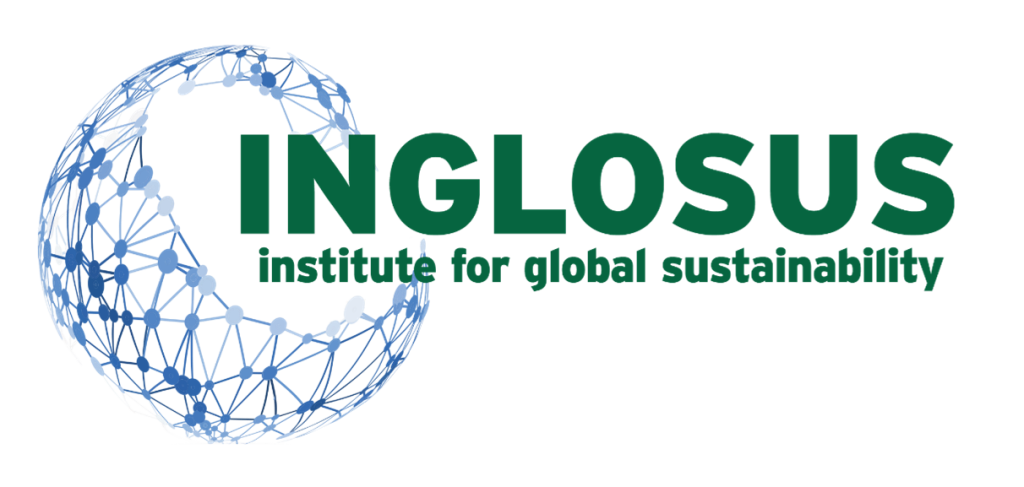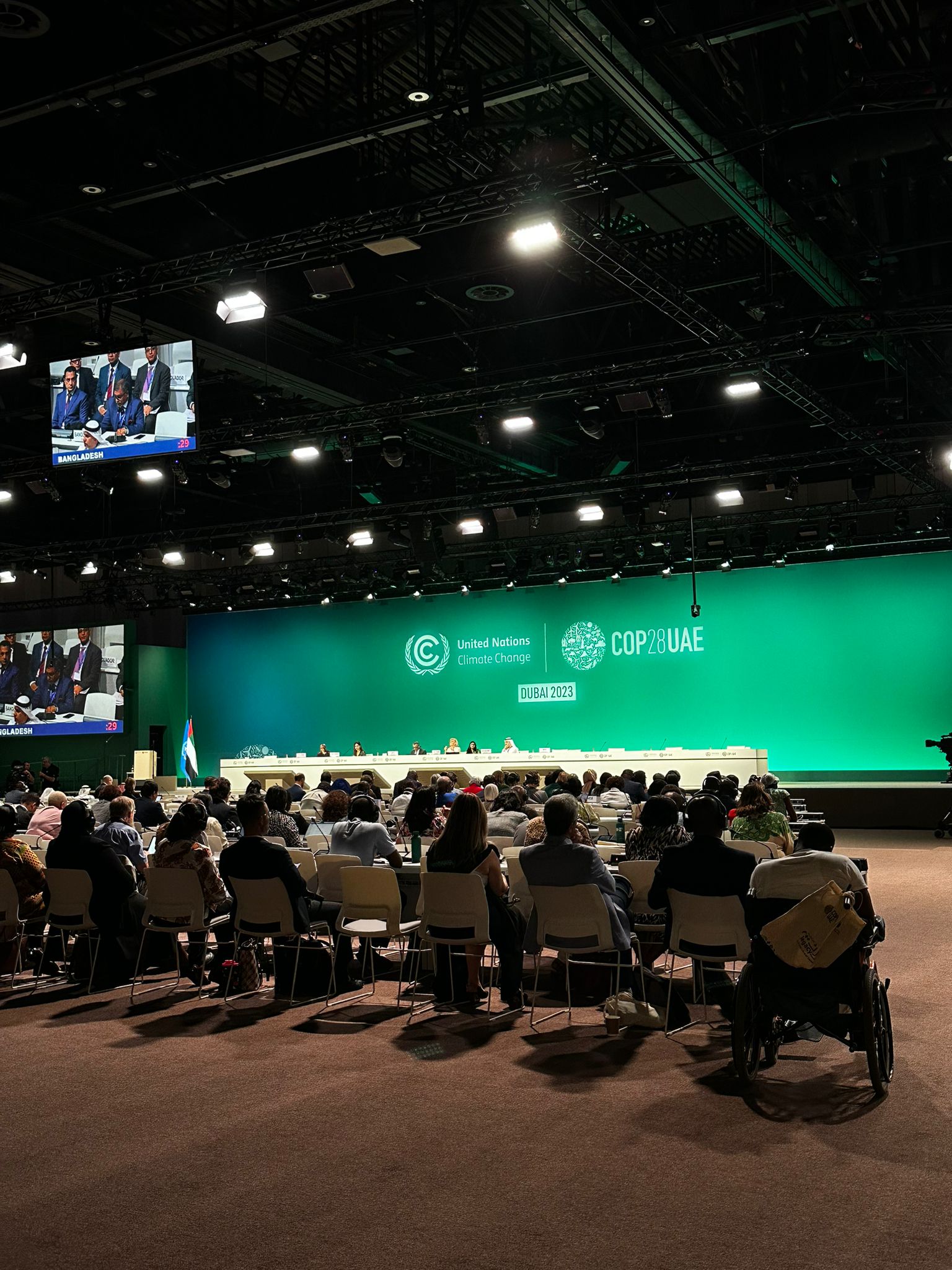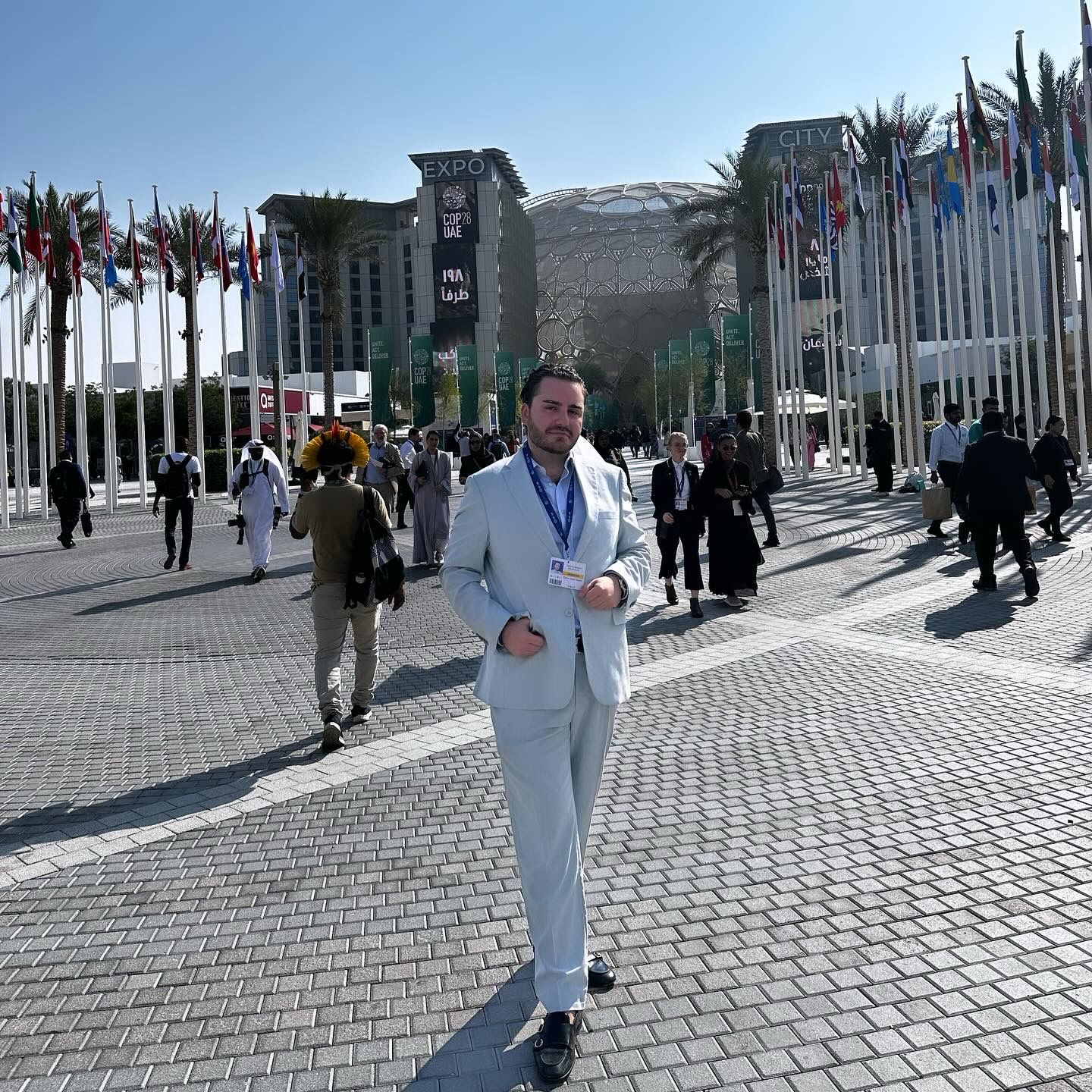The aspect of Sustainability for the Future. Net Zero. Transformation Efforts. Emission Reductions. Inflation. Rising temperatures. Energy Prices. War & Unrest. Big Financing Gaps. Opportunity.
The list of key words travelling through my mind while entering the UN Blue Zone of COP28 at Dubai Expo City was endless, given the endless list of topics being covered during the 2 weeks of COP28.
However, maybe it makes sense to start from the beginning.
Right after leaving the plane at Dubai Airport from Frankfurt, I was stunned to see the intense advertisement within the Airport already, with dedicated entry points for COP28 delegates, as well as information counters in every corner. My excitement arrived right while stepping out into the arrival hall of Dubai Airport, where I immediately met familiar faces from other financial institutions, making their way to the conference.
I arrived on the sight of Expo City on 2 December in the morning. Right at the entrance of the Blue Zone I was overwhelmed by the internationality of the crowd, all in line for picking up the UN badges. Whether from Ghana, Australia, USA, China, Japan or from any other country of the world, wherever I looked at I saw a new origin, which underlined the importance and pull-effects of the COP28. For the first time, I was confirmed, that the global Sustainability Community grows at an unprecedented speed with great impact, as being showcased on all the COP28 Broadcasting systems.
The first official event I visited was the DZ BANK AG / United Nations Economic Commission for Europe Conference which took place in the Action Room in the Blue Zone. As representative of a foundation building the first German “SDG CITY”, meaning my home town Frankfurt, I was equally proud to be surrounded by familiar Frankfurtian and international faces, allowing me to represent our project with great motivation. The overall topic of the session covered the aspect of Transition Finance, to drive forces to turn Ambitions into Action, represented together with United Nations Economic Commission for Europe, DZ BANK AG, High-Level Climate Champions, the European Commission as well as the Regional Platform for Climate Projects. As the son and grandson of a line of Bankers, I am well-aware of the importance of activating the financial sector to realize goals, whatever these goals might be. However, the narrative has changed dramatically with the rise of capital needs for Sustainable Transformation – since everyone waits for the banking sector to step in to close these gaps. We started with a keynote by Dario Liguti, Director Sustainable Energy Division, United Nations Economic Commission for Europe and Souad Benkredda, Member of the Managing Board of DZ BANK AG. Closing with a summary by Tatiana Molcean, United Nations Under-Secretary General, some key messages shocked and surprised me:
At the moment we are on a 2-degree path, loads of scientific scenarios are missing to align the transition plans, which means that financial institutions need to understand sector-specific pathways. At this stage, financial institutions lack behind in understanding not only sector-specific needs, it already lacks behind in clearly identifying these sectors. Of course I thought that banks in Germany know how to scale KYC-processes (Know-Your-Customers) that this would be an easy game for them. The reality looks very different. Furthermore, the overall understanding is there, but specialized. Disclosure mechanisms, API connectivity or anything else: The financial institutions, especially the fund managers, need to see the commercial value of their undertakings to be able to scale. Otherwise, expectation management needs to be re-evaluated. A shock for a Foundation, not a shock for a typical finance-guy like me.
I approached a director of United Nations Economic Commission for Europe about how we can scale the technical know-how for the private sector? I mean, honestly speaking it is very heroic for the government to be ahead of the game, but if they cannot scale a tag-along of the private sector, it will result in a massive “drag-along”, which will only increase investor´s and fund managers´ eagerness to not follow net-zero activities. There needs to be a signaling of clear incentives for scaling private sector funding for transition funds.
His answer? Well, after a bit blurry narratives and reasons not to answer my questions, because honestly speaking, they do not really know either. However, it gives Foundations like us a clear signal, that there is a technical knowledge gap fillable as a charitable, non-partisan institutions. It gave me the clear signal, that there is a method to “tag-along”, which opens interesting new opportunities.
My overall thinking as “small human” alongside these big and important government officials was not so far off reality, which gave me a sense of hope for our business operations to remain relevant and up-to-date, or even further than their own knowledge. Big kudos to my team and Jon-Matteo Brüggenwerth, the mastermind behind our SDG initiatives.
It is like a simple mathematical exercise, which cannot be amended: Public and Private Partnerships for Sustainability have to come with a sort of risk appetite to signal clear commercial incentives for positive upscale. Meaning that sustainability cannot be a charity, it has to be a business case for the large corporations to step in. These narratives accompanied me through my entire COP28 journey, whether in Energy, Climate Finance, Technology, or other sectors: No investment if no commercial value.
On one hand, it scares businesses and the ones exposed to climate risk on equal levels, however, everyone speaks about the “collective effort” for a sustainable future. Nonsense, if you ask me after the COP28. Wars, Unrest, Covid and other crises still dampen the business world and now everyone wants to go sustainable? If the foundation of a house is weak, would you invest in a new roof?
This is a question that still needs to be discussed, which will also hinder – or increase – transformation efforts for the future. However, COP28 gave me a clear picture of where we stand at the moment, especially country-wise.
The interconnectivity of the buildings and areas of COP28 was – excuse my language – insane. Never I have been to a place before, where every visitor´s wish was fulfilled. From food Booths to bikes and shuttles everywhere, we could easily escape the heat for a few moments while traveling from building to building. For the first three days I visited endless Country Pavilions (the list is so long, but I was especially surprised to see great presence from Ghana, Vietnam, Iraq and Japan compared to other “big nations”) in both the green and blue zone and came back with plenty food for though to prepare our lighthouse events “FRANKFURT SDG NIGHT DAVOS” at the World Economic Forum and the “DIGISUSTAIN 2024” In April (www.digisustain.de). I am sitting right now in my office in Frankfurt, with an overwhelming reminiscence, bringing all the contacts, ideas and visions in order, to plan our next steps. The topic of sustainability will be around for many years – decades – so we need to prepare ourselves for the coming times, to stay economically and socially viable and to act as a role-model for future generations to come. Maybe we should re-evaluate the term “Sustainable Transformation” to “Sustainable and Generational Transformation”, so we can reconvene in one “Dream Bubble” all together, to bring ambitions to life. Scalability is key. Understanding is key. The Exchange is key.
If we understand the key mechanisms, we might have a chance. Let´s see.
For now I will work my way through all the business cards, emails and presentations gathered during my 6 days at COP28. It will be an all-nighter, probably.


